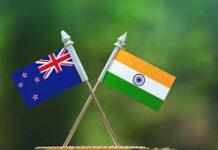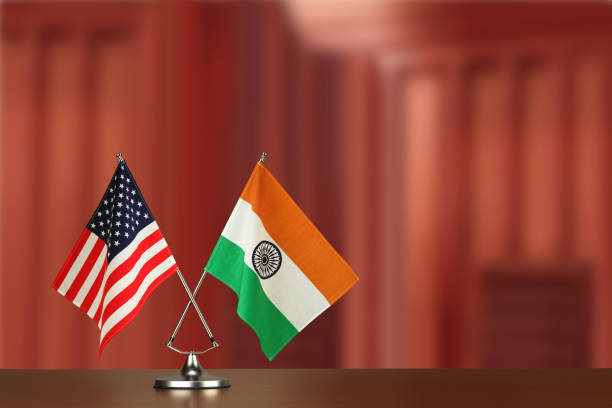India is a large South Asian nation known for its cultural diversity, rapid development, and growing global influence. The USA, or United States of America, is a North American country recognized as a global superpower with advanced infrastructure, high standards of living, and a multicultural society.
| Category | India | USA |
|---|---|---|
| Geography | South Asia | North America |
| Capital City | New Delhi | Washington, D.C. |
| Official Language(s) | Hindi, English | English (de facto) |
| Time Zone(s) | IST (UTC+5:30) | Multiple (UTC-5 to UTC-10) |
| Climate | Tropical to temperate | Diverse (temperate to arctic) |
| Population | ~1.43 billion | ~336 million |
| Currency | Indian Rupee (INR) | US Dollar (USD) |
India Vs USA Economy & Development
India is an emerging economic powerhouse with a mix of services, manufacturing, and agriculture. The USA holds the world’s largest nominal GDP, driven by innovation, finance, and technology.
| Indicator | India | USA |
|---|---|---|
| GDP (Nominal) | $4.27 trillion | $28.78 trillion |
| GDP per Capita (Nominal) | $2,940 | $85,373 |
| GDP per Capita (PPP) | $11,942 | $85,373 |
| GDP Growth Rate | 6.4% | 2.1% |
| Unemployment Rate | 2.6% | 3.7% |
| Inflation Rate | 3.34% | 3.1% |
| Major Industries | IT, textiles, pharma, agriculture | Tech, finance, defense, healthcare |
| Cost of Living | Lower | Higher |
| Income Tax Rate | 30.9% | 10% to 37% |
| Poverty Rate | ~21% (national avg) | ~11.5% |
| HDI (Human Development Index) | 0.644 (2022) | 0.921 (2022) |
| Ease of Doing Business Rank (2020) | 63rd | 6th |
India Vs USA Economy
India’s economy is the fifth-largest in the world as of 2025, with a nominal GDP of over $3.7 trillion. The Indian economy is primarily driven by services, manufacturing, and agriculture. However, the country still faces significant income disparity and poverty. India’s GDP growth rate was around 6.5% in 2024, but it is expected to slow down due to global uncertainties and internal challenges. New Zealand, on the other hand, is a smaller economy with a nominal GDP of approximately $260 billion (World Bank, 2024). Despite its size, New Zealand’s economy is highly stable, and it has a strong export market, especially in agricultural products, dairy, and tourism. The New Zealand dollar has shown stable growth and resilience over time.
| Indicator | India | USA |
|---|---|---|
| GDP (2024) | $3.8 trillion (World Bank, 2024) | $26.7 trillion (World Bank, 2024) |
| GDP Per Capita (2024) | $2,700 (World Bank, 2024) | $79,000 (World Bank, 2024) |
| Life Expectancy | 70 years (World Bank, 2023) | 79 years (World Bank, 2023) |
| Health Expenditure | 3.4% of GDP (World Bank, 2022) | 18.3% of GDP (World Bank, 2022) |
| Literacy Rate | 74% (UNESCO, 2023) | 99% (CIA World Factbook, 2023) |
| Human Development Index (HDI) | 0.624 (UNDP, 2023) | 0.926 (UNDP, 2023) |
India vs USA Healthcare System
India’s healthcare system is developing, with public healthcare services often facing challenges due to inadequate funding, infrastructure, and staffing. The government spends 3.4% of GDP on healthcare (World Bank, 2022), but the quality and accessibility of healthcare services can be inconsistent across the country. India also faces challenges related to malnutrition, infectious diseases, and maternal mortality.
The USA, with the largest healthcare expenditure globally (18.3% of GDP), has state-of-the-art facilities, highly skilled medical professionals, and access to advanced treatment. However, healthcare costs are a significant issue for many, with large disparities in access to care due to insurance gaps and the cost of services.
| Indicator | India | USA |
|---|---|---|
| Healthcare Expenditure | 3.4% of GDP (World Bank, 2022) | 18.3% of GDP (World Bank, 2022) |
| Doctors per 1000 people | 0.8 (World Bank, 2021) | 2.6 (World Bank, 2021) |
| Life Expectancy | 70 years (World Bank, 2023) | 79 years (World Bank, 2023) |
| Access to Healthcare | Varies by region; rural areas under-served | Generally accessible in urban areas |
India Vs USA Tourism & Culture
India, with its rich historical heritage and diverse cultures, is one of the most visited countries in the world, attracting millions of tourists each year. With its UNESCO World Heritage Sites, vibrant festivals, and iconic landmarks like the Taj Mahal, India’s tourism is a significant part of its economy.
The USA also has a rich cultural history and diverse attractions. Major tourist destinations include New York, the Grand Canyon, Disneyland, and national parks. The USA consistently ranks as one of the top tourist destinations globally.
| Indicator | India | USA |
|---|---|---|
| Tourism Arrivals (2023) | 17.9 million (WTTC, 2023) | 79.6 million (WTTC, 2023) |
| UNESCO World Heritage Sites | 40 (UNESCO, 2023) | 24 (UNESCO, 2023) |
| Tourism Revenue | $31 billion (WTTC, 2023) | $240 billion (WTTC, 2023) |
| Cultural Diversity | Highly diverse, 22 official languages | Highly diverse, major cultural hubs |
India Vs USA Government & Policies
India is the world’s largest democracy, with a parliamentary system and a multi-party political structure. It has a federal government with states having a significant degree of autonomy. India’s political landscape has seen significant changes over time, with the current government under Prime Minister Narendra Modi pushing for economic reforms, technology, and development.
The USA, with a presidential system, has a more centralized federal government. The political landscape is dominated by two major parties: the Democratic and Republican parties. Political polarization is a significant issue in the USA, especially in recent years.
| Indicator | India | USA |
|---|---|---|
| Type of Government | Federal Parliamentary Democracy | Federal Presidential Democracy |
| Major Political Parties | BJP, Congress, AAP | Democratic Party, Republican Party |
| Voting System | First-past-the-post | Electoral College system |
India Vs USA Conclusion
India and the USA are two global giants, each with unique strengths and challenges. India, with its growing economy and vibrant culture, is rapidly emerging as a key player on the global stage. However, it faces substantial challenges in terms of environmental degradation, healthcare access, and infrastructure.
The USA, with its established infrastructure, wealth, and technological prowess, remains a dominant force but must grapple with issues such as healthcare inequality, political polarization, and environmental sustainability.
Both nations have vast potential for growth, but the path they take will largely depend on how effectively they address their internal challenges while fostering global cooperation and leadership.






